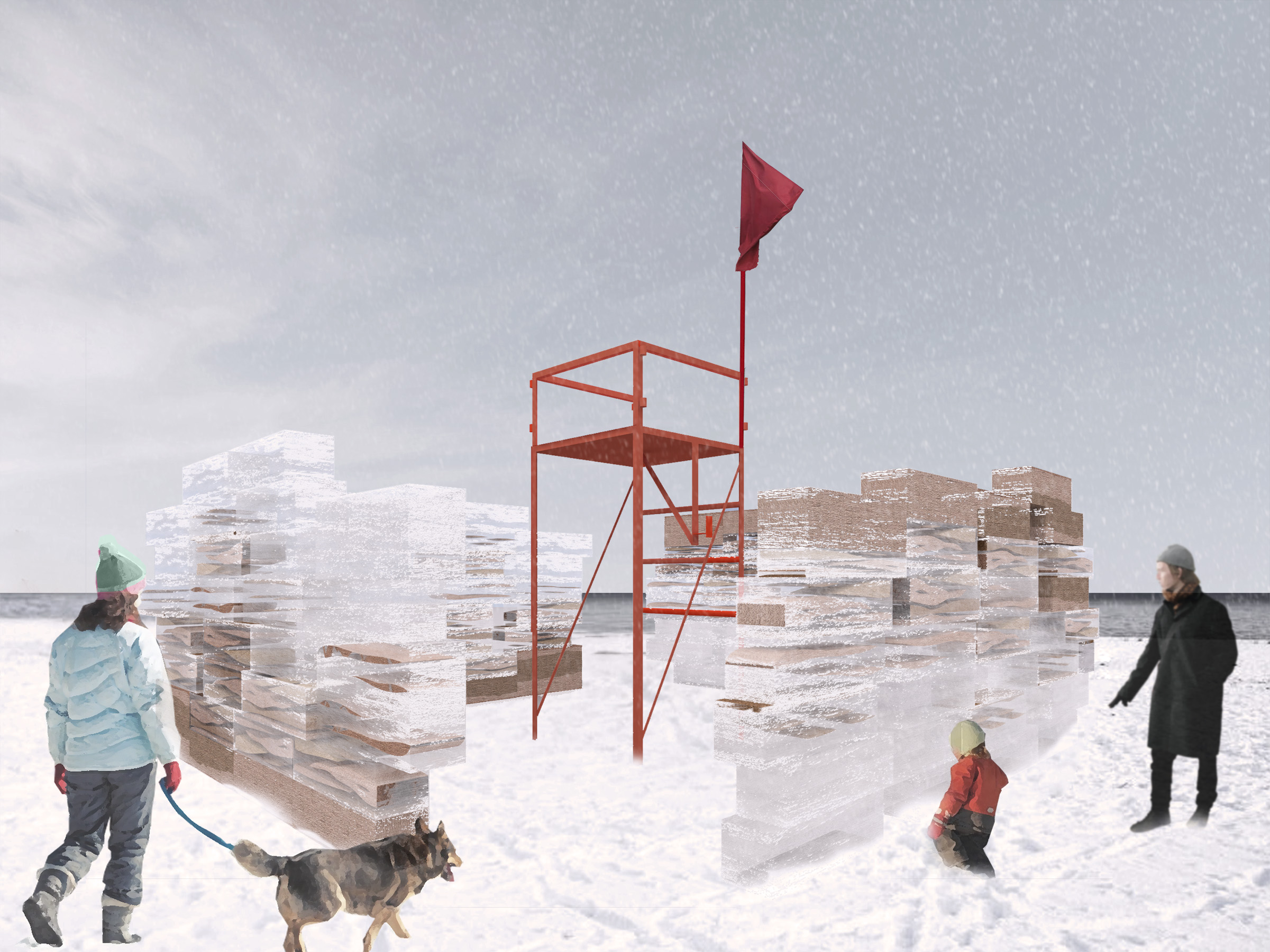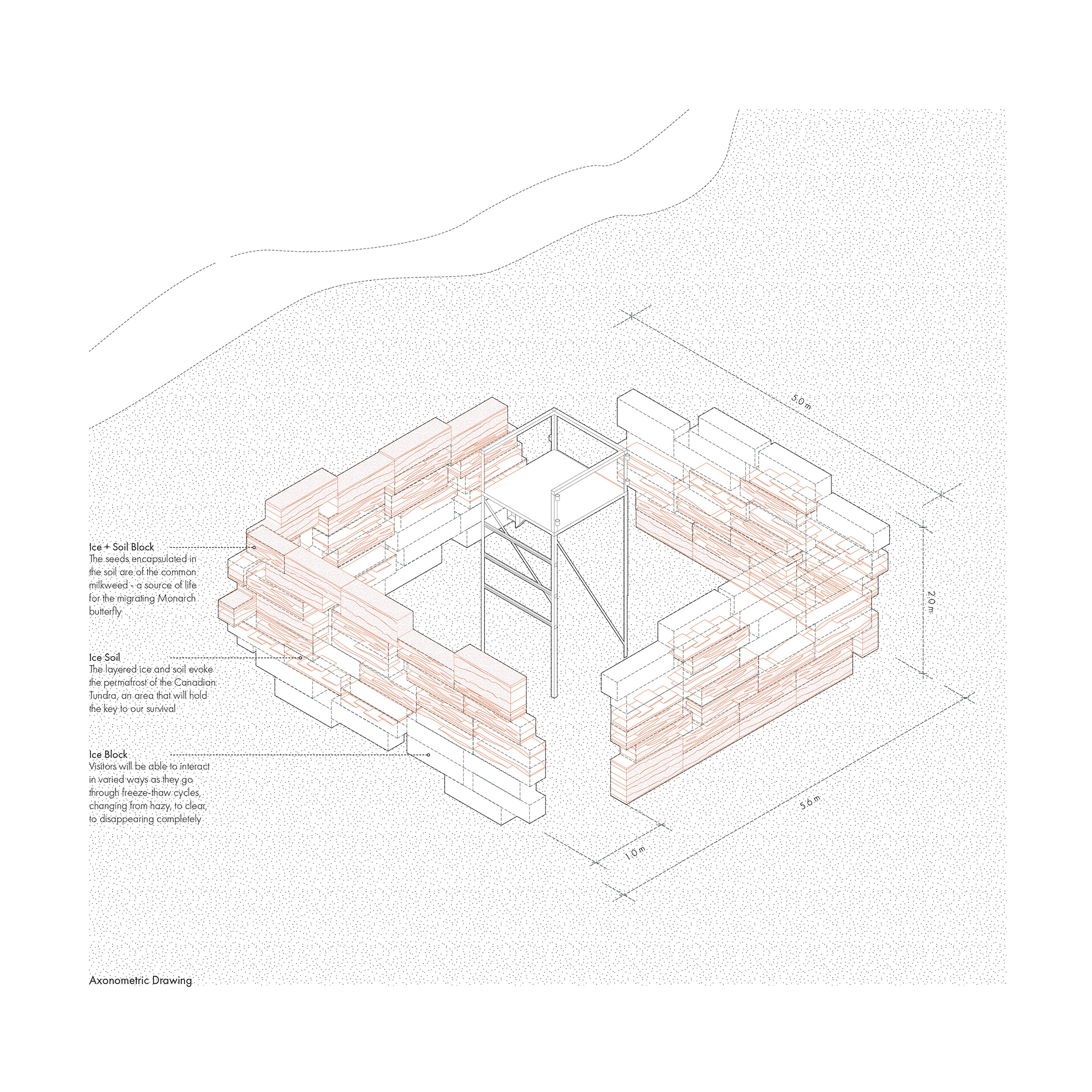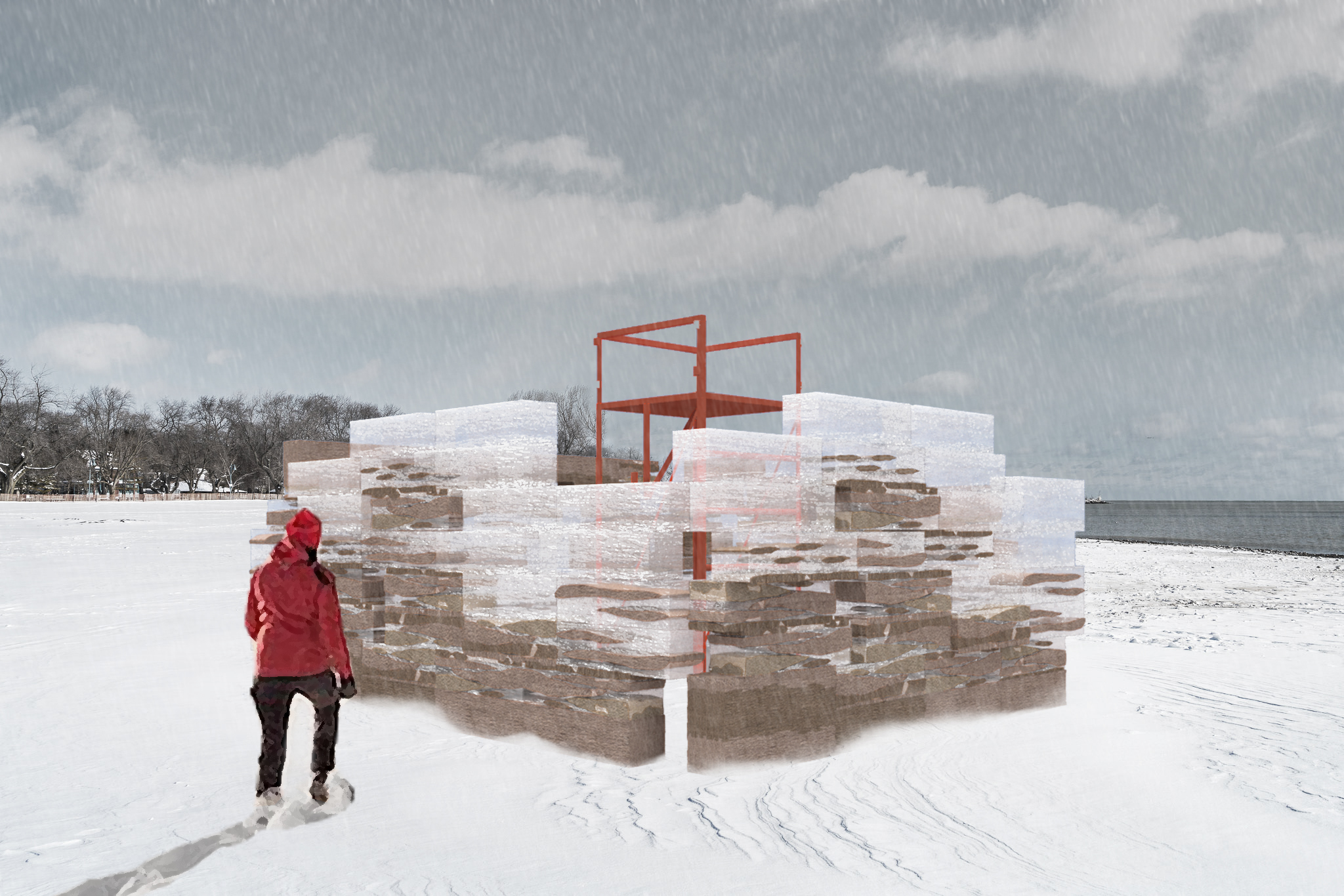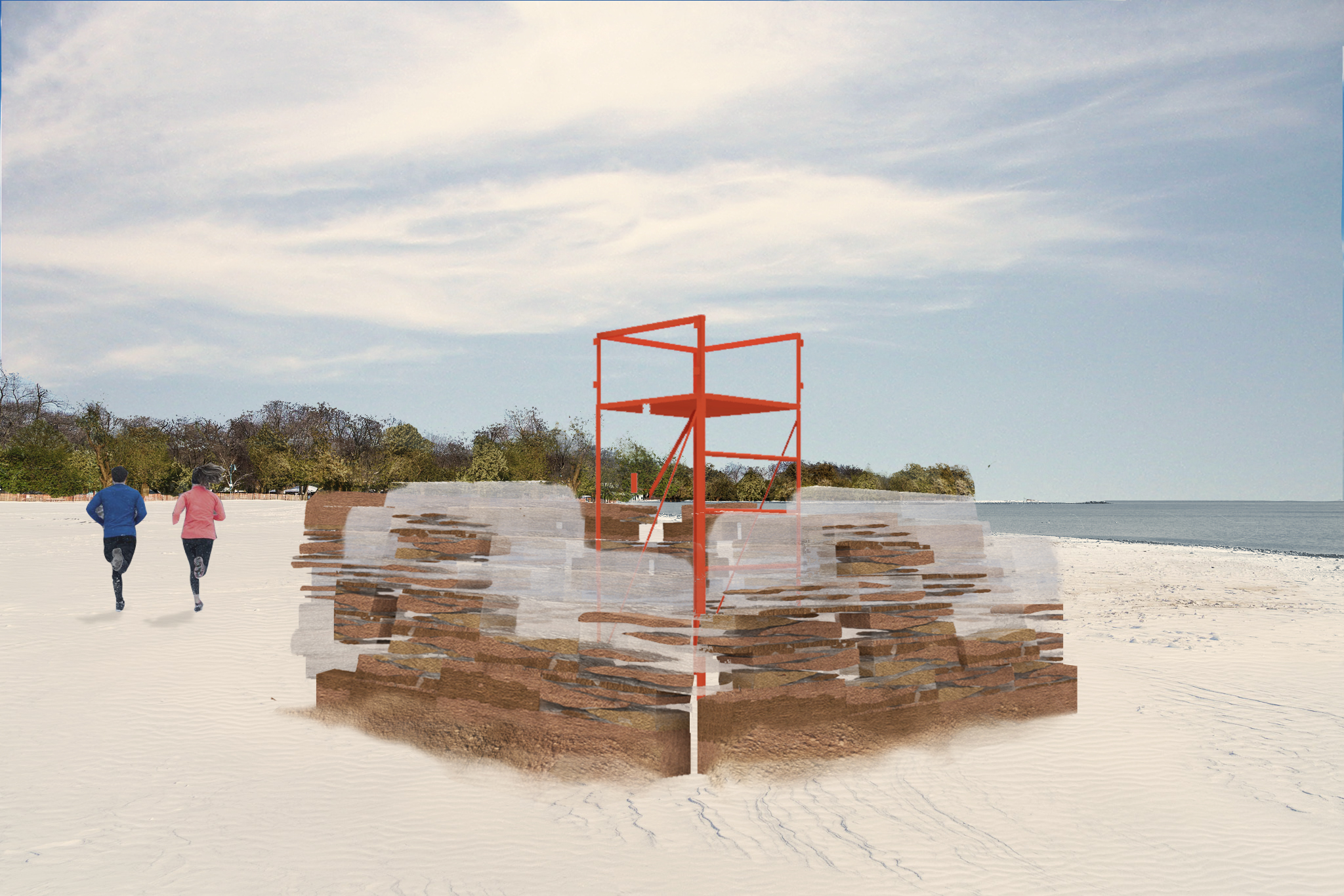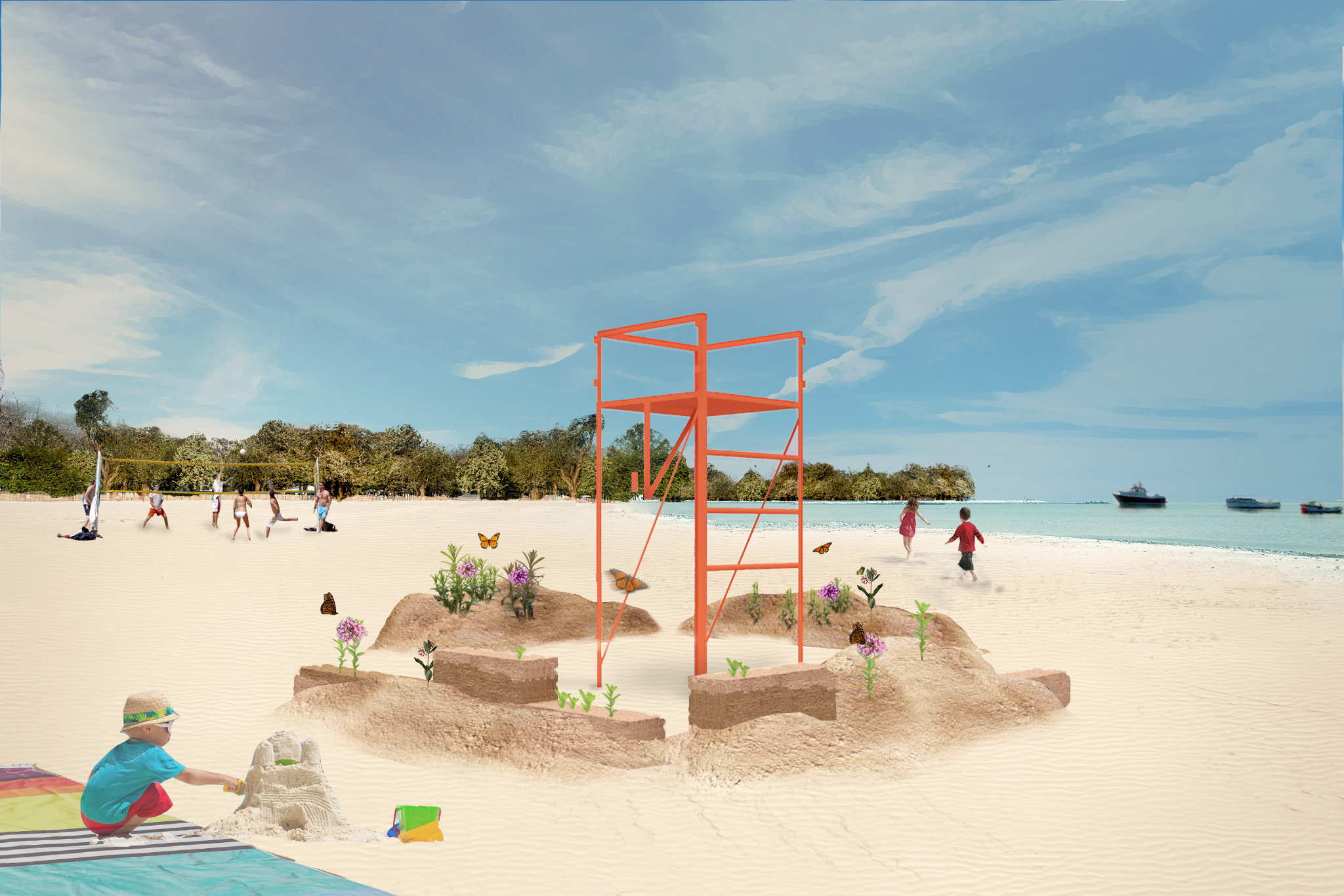WINTER STATIONS / International Design Competition Entry
Project Team: Adelaida Albir, Nishant Jacob, Barak Pliskin, Marie-Charlotte Lemoine, Samuel Warden-Hertz
November 2018.
For its fifth year of this competition, Winter Stations theme for 2019 was Migration. Our submission created a pavilion that would change through the course of the installation, largely outside of the control of its creators, simply at the mercy of unpredictable weather patterns – our proposal focuses on Climate Change and the challenges of Climate Migrations, and seeks to find hope within a landscape of uncertainty.
Competition Text
Change is upon us.
In the next decades, climate and landscape processes will be upended resulting in destabilization across the globe. One target of this change is the Canadian tundra permafrost, which will see large reductions, and in turn, an increase in arable land in the North. As climate change causes 150 million people to migrate escaping sea level rise, water scarcity, and crop failure, Canada is uniquely positioned to adapt and forge a new path.
NOT-SO-PERMAFROST is a snapshot of this change.
This permafrost pavilion, a frozen monolith, over the course of its lifespan, will melt and thaw releasing the soil, seeds, potential life, layered within the ice. The pavilion footprint will transform from a frozen beach into a rich habitat which supports the struggling Monarch Butterfly migration across Canada, symbol of cyclical rebirth at stake in our contemporary crisis, and a sign of hope that sprouts from the dissolved pavilion at the close of the installation.
This installation forces the visitor to engage with a changing climate and its many layers:
- The layered ice and soil evoke the permafrost of the Canadian Tundra, an area that will hold the key to our survival; we will either contain the rising temperatures, leaving encapsulated emissions in place, or we will lose the frost and gain new and vast agricultural lands that we will replace the agricultural land lost in the south.
- The seeds encapsulated in the soil are of the common milkweed – a source of life for the migrating Monarch butterfly – a symbol of cyclical rebirth at stake in our contemporary crisis, and a sign of hope that sprouts from the dissolved pavilion at the close of the installation.
- Visitors will be able to interact in varied ways throughout the year, whether they are looking through the ice in winter or playing on the soil in the hotter months.



